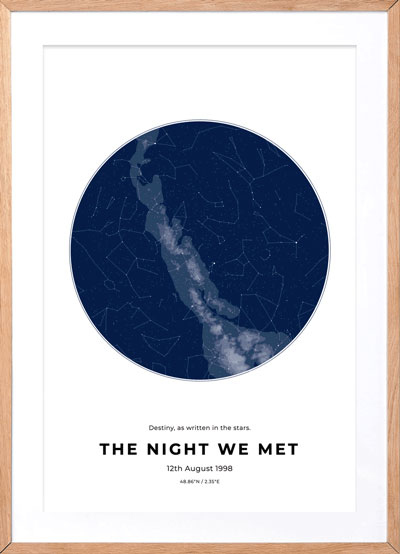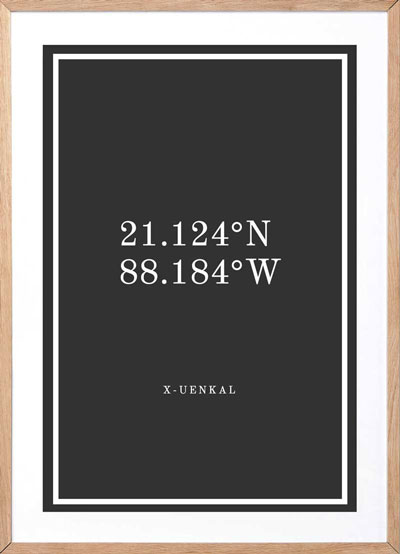We've compiled a list of interesting facts on constellations that can serve as inspiration for your own custom star map! Or just good to know general knowledge!

But first, we need to ask ourselves: what is a constellation? A constellation is a group of visible stars that form a pattern when viewed from any location on Earth. The patterns can take different shapes, and some have been popularized over time. Now-a-days, we have a set number of constellations... according to the International Astronomimcal Union, there are 88 constellations. The list has remained unchanged for almost a hundred years now. Only a few more than a dozen of these constellations are popular and easy to spot. Every constellation is best viewed from certain places and at certain times of the year. While we aren't going to list out all 88 constellations, we have compiled some of them below, with their most optimal viewing times:
- The best time to view Aquarius is October, Aquila is at its vivid best in September, Aries should be explored in December, Canis Major is easy to spot in February and Cassiopeia is brightest in November. Cygnus should be checked out in September, Gemini is vivid in February and Leo is easy to spot in April. Likewise, there are ideal months to view Lyra, Orion, Pisces, Scorpius, Taurus, Ursa Major and Ursa Minor among others.
- The word "constellation" comes from a Latin meaning "set with stars."
- There are 13 Zodiac constellations, which you should all be familiar with, but there are only 12 zodiac "signs". According to an article from NASA, there is a 13th sign called Ophiuchus that is typically left out from our typical Zodiac signs!
- The largest constellation (area-wise) is "Hydra" which is 3.16% of the sky.
- The smallest is "Crux" which only takes up 0.17% of the sky.
Constellations are useful because they can help people recognize stars in the sky, and thus help with navigation. Especially a long time ago, when most of human civilization traveled by boat, the navigators of these boats would use constellations to guide them in the right direction. This is another reason why the "North Star" is called the North Star, because it helps people from anywhere and everywhere locate which way is north.
While constellation maps are helpful guides for most places across a region, they should be customized to be specifically for a particular place. All space observatories around the world have their own constellation maps. Those maps are designed in accordance with what can be best viewed from the site at different times of the year. The night sky in London may look similar to the night sky in New York to a casual stargazer. However, it is not just the positions of the constellations that will vary across the pond but also the exact appearance of the stars. Various local issues come into play when you’re stargazing. There is a simple reason why you need custom and illustrated constellation maps. Not every constellation can be spotted in the same way. Some are easier to spot. The difference largely lies in the brightness of the stars and the actual pattern formed by the group of stars. Aquarius doesn’t have many bright stars. Actually, none of the stars in the constellation can be deemed bright. The outline of the grouping is also quite faint. Hence, you may struggle to spot the constellation unless the conditions are ideal and the map you have is perfect. You also need some handholding initially, which the best maps will offer. You need to know more than just the pattern and the position in the nighttime sky to identify the specific constellations. The information you have should be relevant to where you are and how you are viewing the night sky.
We hope these facts inspire you to create your own custom star map! Share with us your customizations and let us know how we're doing at [email protected]



